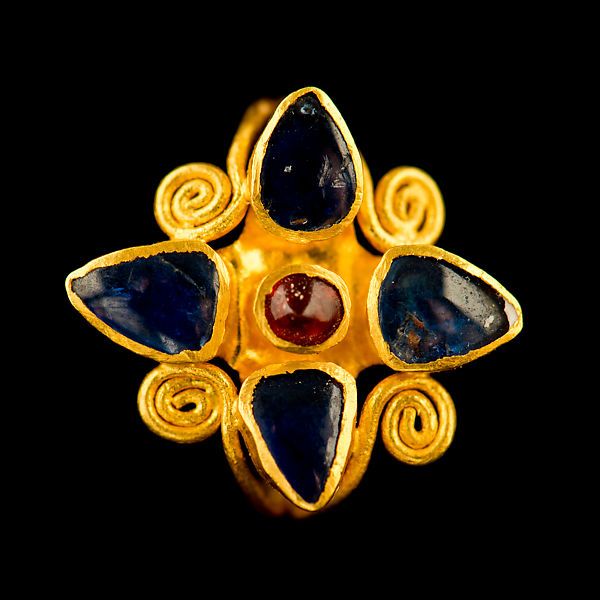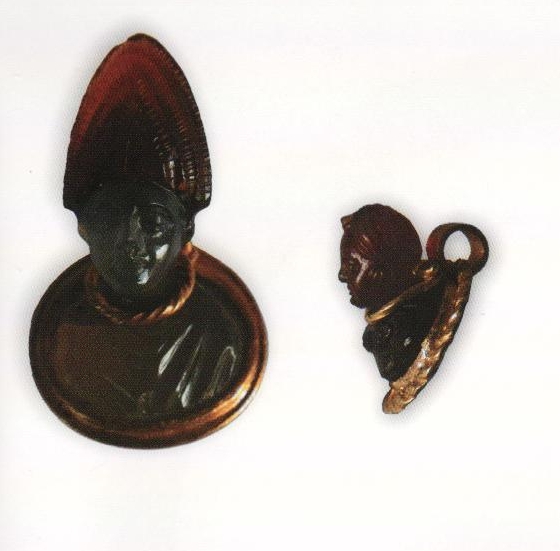The Tomba degli Ori containing a burial of an aristocratic Daunian woman named Opaka Sabaleida, was accidentally discovered in 1928 at Canosa [Apulia, Southern Italy], an important center of ancient Daunia.
Opaka Sabaleida, a young noble girl, was buried together with her most precious things (22 pieces), including the shell-shaped case and elaborated diadem that are now part of the Museo Archeologico Nazionale di Taranto [MARTA] collection.
The silver gilded shell-shaped container probably for cosmetics, is decorated with two valves that imitate the shape of the ‘Pecten Jacobeus’ (St. James mussel) joined by a hinge on which the name of the deceased is inscribed. On the inner and outer face of the upper valve there is the iconographic motif of a Nereid on a sea monster [ketos], while she plows the sea, represented by a triple row of engraved and golden waves. [https://artsupp.com]


https://www.corriereditaranto.it/2022/08/01/2a-ferragosto-marta-aperto-per-ferie/collezione-ori-di-taranto-museo-archeologico-nazionale-di-taranto/
A gold diadem with carnelian, garnets and blue glass paste; from Tomb of Ori, Canosa. Hellenistic, Magna Graecia, 3rd-2nd century BCE. (Archaeological Museum of Taranto, Italy)



https://arteeluoghi.it
Tenacious Tendrils: Replicating Nature in South Italian Vase Painting; Keely Heuer, 2019, DOI:10.3390/arts8020071












